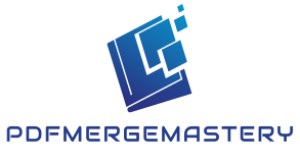Preserving the high quality of PDF documents when merging them is an important aspect of effective information management. When working with various PDF documents, there is a need to merge them to create a single, easy-to-read file. However, this process can be a source of quality loss if certain practices are not followed.
Choosing the right tools and programs for merging PDF documents
Choosing a tool to merge PDF documents is an important step that determines the success of the process without sacrificing quality. Here are a few key criteria to consider when choosing a program:
- PDF version support: Make sure that the tool you choose supports all versions of the PDF you are going to work with. This is important to avoid possible compatibility issues and preserve all the features of your documents.
- Handling nested files: If your PDF documents contain nested files such as images, check if the tool supports merging them correctly. This is important to preserve the completeness of the content.
- Optimization and compression: The tool should provide file optimization and compression capabilities to minimize the size of the final document. This helps in faster file uploading and sharing, especially when dealing with large amounts of data.
- Working with images and graphics: Check the tool’s image manipulation functionality. The ability to optimize resolution, control color gamut and image formats helps in maintaining high quality graphics.
- Font support: Ensure that the tool supports nested fonts and ensures that they are displayed correctly. This ensures that the formatting and style of text elements are preserved
- Interface and Usability: An intuitive interface and usability of the tool are also important criteria. The easier the merging process is, the lesser the chances of errors and misunderstandings.
- Platform support: Make sure the tool you choose is compatible with your operating system. Some programs may be platform-specific, which is important to consider when making your selection.
Choosing the right tool that takes into account the above criteria will ensure effective merging of PDF documents with minimal risk of quality loss. Remember that careful study of the tool’s functionality and testing it on your documents will help you choose the best solution for your needs.
Optimizing images and graphics when merging
Effectively optimizing images and graphics in PDF documents when merging them plays an important role in preserving quality and managing file size. In this context, a few key steps can ensure an optimal balance between visual quality and performance.
When preparing images for merging, it is important to choose the format according to their type and project requirements. For example, JPEG is suitable for photos where loss of quality is acceptable, but it may not be the best choice for logos or illustrations where fine detail is important, also setting the optimal resolution is an important step for managing file size. Keep in mind that very high resolutions may be excessive for digital viewing and increase file size unnecessarily.
Compressing images without loss of quality and removing unnecessary elements
Using lossless compression allows you to reduce file size while retaining all the detail and clarity of the image. This is especially important for important graphic elements where quality is crucial, and in turn, removing unnecessary elements such as hidden layers, comments or invisible objects beforehand reduces the amount of data, which is important for effective file size management. This step can also simplify the navigation and perception of the document.
| Format | Application | Advantages | Disadvantages |
| JPEG | Photographs | Good compression, color support | Loss of quality at high compression levels |
| PNG | Logos, Illustrations | Transparency, no loss of quality | Larger file size compared to JPEG |
| GIF | Animations | Support for animations, small file size | Limited color palette, not efficient for photographs |
Managing the color palette and color settings
When merging PDF documents, it is important to carefully manage the color palette and color settings to ensure a consistent visual experience and avoid loss of quality due to inconsistencies.
- Choosing the right color space: Use the right color space according to the nature of your documents. For example, CMYK is often used for documents intended for printing, while RGB is appropriate for documents intended for digital display.
- Controlling color settings: Make sure that the color settings of your documents are consistent. Particular attention should be paid to contrast, saturation, and hues. This prevents possible color distortions when combining files with different settings.
- Converting colors in a document: If colors in different documents do not match, consider converting the colors to a single color space. This ensures that colors will appear the same in different parts of the merged document.
- Testing color compatibility: Before completing the merge process, thoroughly test the color compatibility of all elements. Make sure that text is readable, graphics display correctly, and colors retain their intensity.
| Color Space | Application | Advantages | Disadvantages |
| CMYK | Printing | Good color reproduction for print | Limited support for bright and saturated colors |
| RGB | Digital Display | Bright and saturated colors | May require conversion for print |
| sRGB | Internet, Monitors | Standard color space for the web | Limited use in print |
Efficient management of color palettes and color settings ensures that the merged PDF document maintains high color fidelity and provides a consistent visual experience across all devices and media.
Support for nested fonts and text elements
When merging PDF documents that contain different fonts and text elements, you need to ensure that these elements are supported in order to preserve the readability and structure of the document.
Handling nested fonts is a key aspect of this process. The tool used for merging must be able to correctly handle the variety of fonts found in your source documents. This includes not only basic standard fonts, but also more specific fonts used in design or corporate materials.
Support for text elements is also an important feature of the tool. This includes correctly displaying headings, paragraphs, and lists, as well as maintaining formatting such as indentation and text alignment. The tool’s ability to handle these elements correctly helps maintain the structure of the document and prevent information loss.
In case your source documents use different fonts, the tool should provide the ability to automatically convert fonts or match close analogs. This is important to prevent problems with text display due to the lack of required fonts on the viewer.
Preserving text formatting is an important aspect when supporting nested fonts and text elements. The tool should carefully preserve all formatting structures such as bold text, italics, underline, and font color. This ensures that the appearance of text elements in the merged document is consistent and maintains the integrity of text information.
Saving a document with minimal loss of quality
After successfully merging PDF documents, an important step is to preserve them with minimal loss of quality. This requires careful consideration of several aspects to ensure that the document remains satisfactory both in terms of visual perception and efficient use of resources.
One of the key factors in saving a document is choosing the best format. Consider whether the document is intended for printing, digital viewing, or long-term storage. When it comes to compression settings, it’s important to strike a balance between file size and preserving quality. Optimizing compression settings can reduce the amount of data while preserving the details of important elements. This is especially important for images, where high quality is often a key factor.
Choosing the appropriate compression method also depends on the nature of the content. For example, the JPEG2000 method may be preferred for documents with many text and graphic elements, as it retains higher quality than regular JPEG. After saving the document, it is recommended to perform quality testing. Analyze the document on different devices and in different PDF readers. This test will help ensure that all elements remain clear and readable, which is especially important for multimedia and detailed documents.




